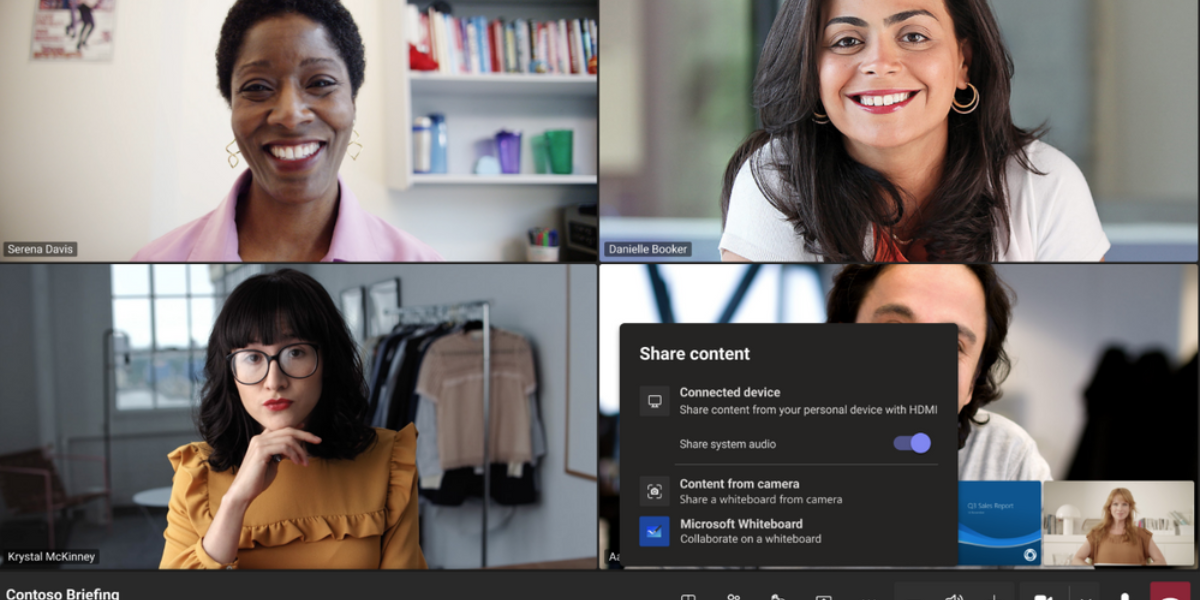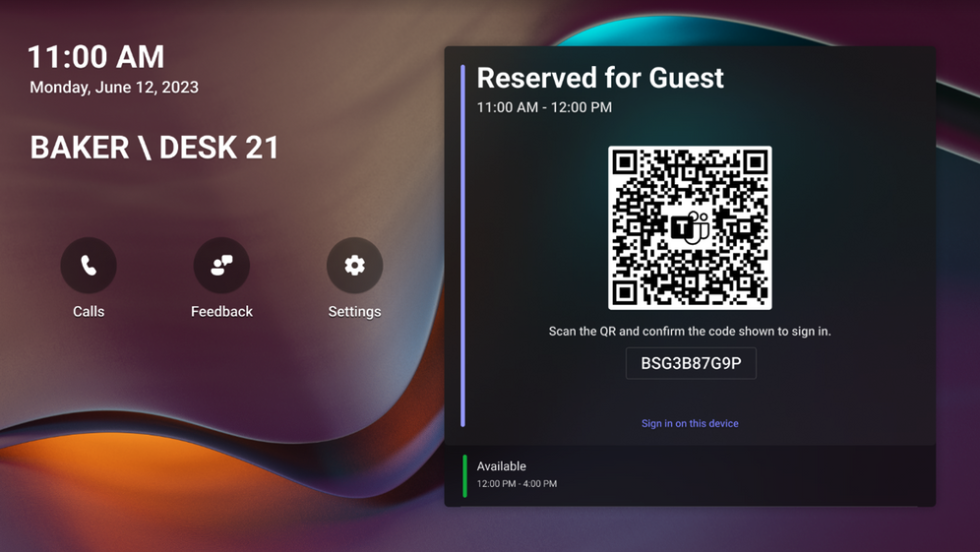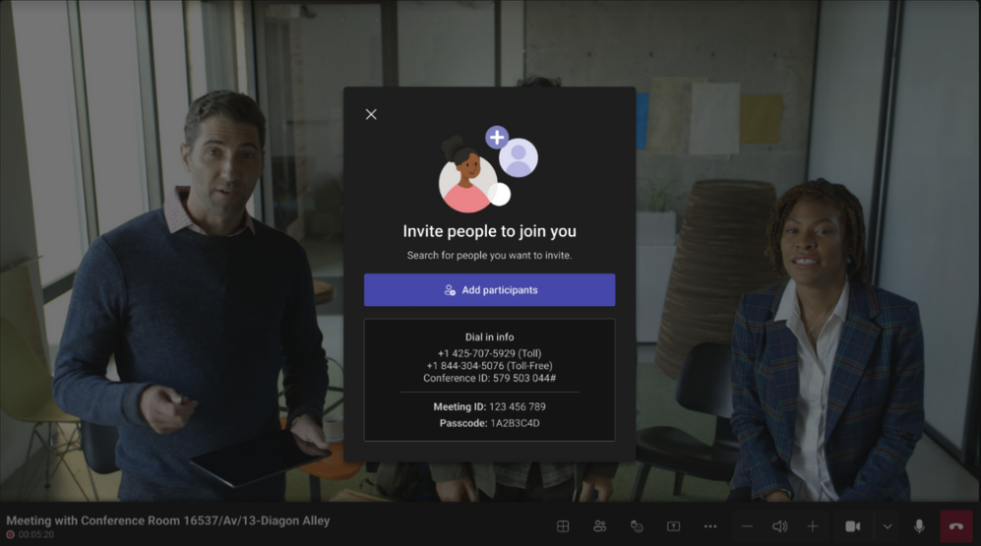Microsoft Teams Adds New Security, Compatibility with Cisco, Embeds New Features and Debuts Partner Solutions

Through collaboration with its partners, Microsoft is using the new version of Teams Rooms to lighten the load for IT teams who have to manage numerous BYOD (bring your own device) rooms.
As promised, native Microsoft Teams Rooms experiences are now available on Cisco’s video technology — a portfolio of Teams-certified devices by Cisco covering all workspaces.
Cisco devices certified for Teams will enable users to seamlessly connect from a native Teams Meeting to a Webex meeting and back again. Customers will have the option to make Microsoft Teams Rooms their default experience, even as the devices will continue to support joining Webex meetings with all the current features and functionality. All Cisco devices certified for Teams will be manageable in the Teams Rooms Pro Management Portal for customers with the Teams Rooms Pro license.
The new Cisco Board Pro, available in 55-inch and 75-inch sizes, are among the first Cisco devices certified for Teams. The Board Pro is a touch board that enables video meetings, digital whiteboarding, annotating on shared content, access to apps and wireless presenting.

Teams displays with the hotdesk experience make it easy to reserve a seat in the office and know you will have a workspace when you arrive. In fact, with the latest QR code sign-in experience that will be available later this summer, hotdesking users can access their personal Teams account by scanning a QR code on a Teams display and using the Teams app on their mobile phone to log in faster. With this update, users no longer have to enter their credentials into the device manually, speeding up user productivity. This feature was introduced after running a few pilots of Teams displays in phone rooms around Microsoft’s campus. The users involved in the testing process offered valuable feedback, telling Teams that logging into the device was tedious and inefficient, so the ability to sign in with a QR code should streamline this process.

Yealink DeskVision A24: Now certified for Microsoft Teams, the Yealink DeskVision A24 delivers productive personal or shared space computing as a Microsoft Teams display. The device includes several communications features with AI-powered audio and video capabilities. The A24 comes with dual-mode device connections as well as a 4K camera, built-in speaker and mic, wireless charger and a hinge monitor design that enables the screen to be tilted and used for whiteboarding.
For BYOD spaces, Microsoft, for less than $1,000, can light up the front-of-room display, have a high-quality Teams meeting experience and manage the space. Low-compute capabilities allow BYOD room screens to greet users with room details and calendar, with instructions on how to use the room, while IT admins can manage device firmware updates and access real-time monitoring and room utilization metrics via the Pro Management Portal. And when users see a room hit its utilization threshold in the Pro Management Portal, it’s easy to upgrade to a Teams Room for an inclusive and collaborative shared-space meeting.
One example of this is what Crestron is doing with Microsoft. Using the new Crestron AirMedia for Microsoft Teams, with a single USB-C connection and a one-button press, the AirMedia solution delivers a streamlined workflow for sharing content and meeting connections. No drivers to download and no applications to run. Simply plug in, press to connect and you’re meeting-ready.
This year, customers will enjoy more consistency in Teams Rooms user experiences and functionality across Windows and Android and new devices certified for Teams on both platforms.
Surface Hub will join the Teams Rooms family later this year as the first touch-enabled board running Teams Rooms on Windows. Newly released Teams Rooms features will now come to Surface Hub on Day 1, including Front Row (now, finally, running in 5K resolution). And with streamlined management and compatibility with any Teams-certified Rooms devices, it’s easier than ever to add a Surface Hub for premium collaboration alongside traditional setups.

They also announced something called the Microsoft device ecosystem platform: Microsoft and Android together designed for shared spaces and optimized for Teams devices. The Microsoft device ecosystem platform, which brings together the best of Microsoft and Android, tailor-made for shared spaces and optimized for Microsoft Teams devices. Built on the Android Open Source Project (AOSP), the platform delivers the security, reliability, management and ease of deployment Microsoft is known for, and the diversity of hardware and software support that comes with Android.
The Microsoft device ecosystem platform delivers security tailored for shared spaces and features a class-leading collection of security and tamper resistance features, including secure and verified boot, anti-rollback, access-controlled security policies, partition Logical Unit Number (LUN) locking and data at rest encryption.
With a hardware-based root of trust and attestation, built on Microsoft’s PKI cryptography and Qualcomm’s Trusted Execution Environment, the platform reinforces security with attestation by enabling secure identification of the device and its configuration. This is built with the advantage of the Qualcomm QCS8250 IoT chipset supporting multiple concurrent instances of VPU-based hardware offload video encoding and decoding.
The first device taking advantage of the new device ecosystem is from Jabra, with more to come from other partners. The Jabra PanaCast 50 Video Bar System is an integrated solution that includes a Qualcomm state-of-the-art system-on-chip (SOC) compute unit running Android, which will be upgradeable to the new Microsoft device ecosystem platform. It also includes other specialized processors, as well as speakers, microphones and video cameras, with network and display interfaces for easy deployment. The solution comes with a 10.1-inch touch controller to manage the room experience. The system natively and securely runs Microsoft Teams Rooms on Android.

Management capabilities are enhanced with native support for Intune’s latest Android (AOSP) management solution, Teams Admin Center, and the new Microsoft management watchdog service, all of which ensure that devices are always responsive and ready to use. Matching this, the PanaCast 50 Video Bar System is designed to adapt to evolving UC experiences and hybrid workplace needs with its AI-powered software-defined platform.
Teams Rooms is strengthening endpoint security for Teams Rooms Pro customers to provide the most secure Teams Rooms meeting experience. Microsoft Defender for Endpoint Plan 2 will be integrated into the Microsoft Teams Rooms Pro license and the Pro Management Portal, combining robust enterprise security management together with Microsoft Teams Rooms Pro management.
This integration will save Teams Rooms Pro customers money, with anti-malware protection from security vulnerabilities that eliminate the need to add other security services. With incident reporting, customers will also gain peace of mind that provides a 360-degree view of Teams Rooms’ health and security. The security tools within the Microsoft Defender Security Center will also be available for customers’ Teams Rooms alongside the rest of their endpoints.
Microsoft Defender for Endpoint Plan 2 will be added to Teams Rooms Pro licenses by the end of Q2 2023. This feature will be retroactively added to licenses that have already been purchased and will be available for all new Teams Rooms Pro license purchases. In the second half of 2023, the service will be integrated into the Teams Rooms Pro Management portal interface, proactively displaying security incidents across Windows-based Teams meeting room devices, with Android to follow.

First announced in January, a new interface is coming to Teams Rooms on Windows this month. Users can look forward to a homepage and function screen design refresh, five new themes, more intuitive messages and the enablement of custom themes with an organization’s images and branding on meeting room displays. With the update (v4.16) this month, there is a consistent, familiar Teams Rooms experience across Windows and Android device platforms. IT Admins can find readiness guidance for the user interface update on the MS Learn site.

Start an ad-hoc meeting with the Meet button, and invite participants to your meeting from the table console. You can join by ID from the console when you need to join an existing meeting, and your room isn’t invited. On the occasion when your meeting needs to run beyond the scheduled time, if the room is available, you can extend the room reservation with one touch.
Front Row, a layout experience designed to enhance hybrid meetings, is now available for Teams Rooms on Android. In-room users can see remote attendees at eye level on the front-of-room display, making for more natural interactions between participants whether they are in the room or remote. The meeting chat is available to the right of the content, so in-room participants can follow it without taking their attention away from the display. Chat has been added as an option to every layout, including Gallery, Large Gallery and Together Mode.
- When sharing content over HDMI, including audio, admins can control whether content gets shared automatically or presenters are required to opt-in via a tap of the “Share” button.
- Meeting organizers with a Teams Premium license can add a room account watermark on video participants’ camera streams and supported shared content.
- If a working session requires mark-ups and annotations, everyone can participate. When a participant joining from their desktop starts an annotation session with shared content, in-room users can see the annotations made and can contribute from the touch display room device.




